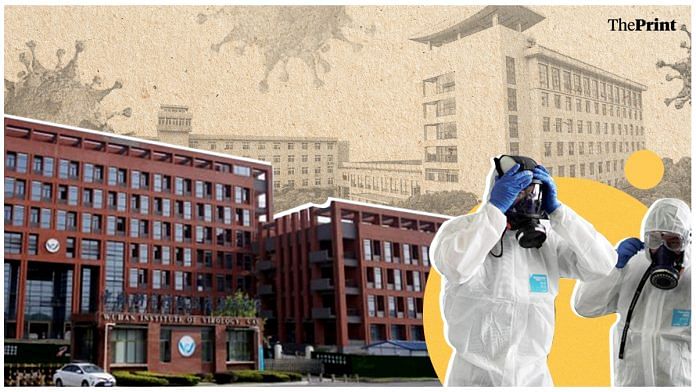New Delhi: China’s first lab with a biosafety rating of ‘P4’, the Wuhan lab which is suspected of leaking the coronavirus, was more than a decade in the making.
Scientist Yuan Zhiming, the man behind the making of the lab, and his colleagues at the Wuhan Institute of Virology (WIV) had hoped that the lab would help prevent a catastrophe like the 2003 SARS outbreak, according to an article in The Washington Post.
In 2020, they came to be suspected of being the genesis of an even deadlier outbreak.
The Washington Post quoted Yuan at a news conference back in July when he had vehemently denied the lab’s role in the genesis and spread of the SARS-CoV-2 virus. “The Wuhan P4 lab has never seen any laboratory leaks or human infections since it began operating in 2018,” Yuan had said.
Last month, US intelligence agencies in a report had also said that the origins of the virus — whether natural or man-made — was unclear.
Also read: China’s Wuhan story unravels as world’s finest, including from India, nail Covid lab-leak proof
French engineering, state-of-the-art facilities
The P4 lab, The Washington Post article details, is located in the city’s southern industrial outskirts and covers about two football fields. Built with French engineering, the structure took off from the French P4 lab in Lyon. The four floors include waste management at the bottom, experimental labs and animal rooms on the main floor, and apparatuses to ensure airflow.
P4 or biosafety level 4 (BSL4) labs are designed and built so that researchers can safely work with the most dangerous pathogens on the planet.
The WIV, though, has never divulged the kind of viruses that were being kept at the pathogen lab.
“WIV management has reminded staffers for years about state-secrets requirements and warned them to be wary of foreign spies,” the article mentions.
It also quotes Jean-Pierre de Cavel, a French expert, who had conducted safety training in 2010, as saying that the lab was meant to be used “to study highly infectious diseases such as Ebola, Crimean-Congo hemorrhagic fever and smallpox”.
Also read: Wuhan and 58 other labs handle world’s deadliest pathogen. Only some score high on safety
Making of the lab
The WIV was founded in 1956 as a branch of the Chinese Academy of Sciences (CAS) and was initially focused on agricultural pests. In 1978, the Chinese administration ordered the institute to build the nation’s first archive of viruses. Four hundred viruses were collected over the first decade.
Following the SARS outbreak, China decided to build a P4 lab. At the time, Yuan along with Chen Zhu, CAS’s top official for biological sciences, went to France to persuade experts to take on the construction.
Then-President Hu Jintao finally sealed the deal in January 2004. Gabriel Gras, a French biosecurity expert, was quoted describing the lab as the “project of Yuan’s life”.
Soon after, Yuan’s colleague, Shi Zhengli, started searching bat caves for the origin of SARS. In 2004, her team collected samples from 408 bats across China. Seven years later, Shi discovered a close relative to SARS — a finding that had earned her the moniker ‘Bat Woman‘.
In the following years, Shi’s team found “all the genetic pieces of the SARS virus” in a Yunnan cave.
But in 2020, Shi clinched the spotlight when the Wuhan lab was sealed off following the emergence of a new virus. “In a preprint paper, her team announced that it had found a virus 96.2 percent identical to the novel coronavirus,” The Washington Post states.
Shi was initially concerned that the virus could have come from the lab but has since maintained that WIV had little to do with its origins.
In the face of the controversy, international collaborations on research seem to have taken a hit.
“The ‘comprehensive news’ section of the WIV’s website once highlighted international collaborations, but it has dwindled to politically correct posts about researchers studying the speeches of Chinese leader Xi Jinping,” the report states.
(Edited by Neha Mahajan)
Also read: Why the suspicion on China’s Wuhan lab virus is growing. Read these new analyses



